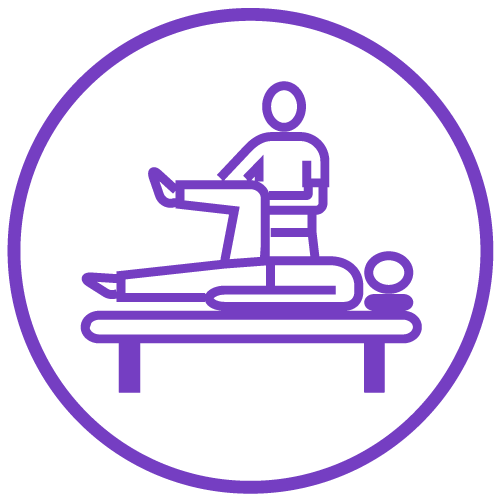Whether you work in an office or on a construction site, you probably spend most of your day hunched over a desk or doing repetitive tasks. All that time sitting still or making the same movements over and over can seriously damage your body. Back and neck pain, headaches, and other musculoskeletal issues are common complaints, but they don’t have to be an inevitable part of your job. In fact, there are some simple solutions right here in Brisbane that can help keep you healthy, pain-free, and productive at work.
This article will explore how ergonomics and physiotherapy can transform your workday and workplace wellness. We’ll look at easy adjustments you can make to your desk setup and chair, exercises you can do right at your desk, and how seeing a physio for targeted therapy and a workplace assessment can help identify and fix the root causes of your pain. The best part is, many of these solutions are low-cost or even free. Why suffer through another day of discomfort when relief may be just a few small changes away? Read on to learn how ergonomics and physio can make your workday work for you.

Why Focus on Workplace Injury Prevention?
Why should companies invest in workplace injury prevention? Simple – it saves money and boosts productivity. According to studies, for every $1 spent on workplace wellness, companies can save $2.30 in costs.
- Reduced Absenteeism. Healthier, less injury-prone employees take fewer sick days. This means less disruption and higher productivity.
- Lower Healthcare Costs. Fewer workplace accidents and injuries mean lower medical bills for the company. Physiotherapy and ergonomic solutions are cost-effective ways to curb long-term health issues.
- Improved Morale. A safe, health-conscious work environment leads to happier, more engaged employees. Staff feel valued when companies invest in their well-being.
- Avoid Litigation. Workplace injuries can lead to expensive legal issues and insurance claims. Prevention is the best way to avoid these costs and protect the company’s reputation.
In summary, focusing on workplace wellness through ergonomics and physiotherapy makes good business sense. For a relatively small investment, companies can reap significant rewards through a healthier, more productive workforce. What’s not to like about that?
Common Causes of Workplace Injuries in Brisbane Offices
If you’re like most office workers in Brisbane, you probably spend the majority of your day sitting in front of a computer. While technology has made many tasks more efficient, it’s also led to new health issues like back and neck strain, eye strain, and repetitive stress injuries.
Some common causes of workplace injuries in Brisbane offices include:
• Improper desk setup – If your desk, chair, keyboard, and monitor aren’t properly adjusted to your height and posture, it can lead to back, neck, and shoulder pain as well as headaches. Make sure your knees remain level with your hips, your arms are even with the desk surface, and your monitor is at or slightly below eye level.
• Poor sitting posture – Slouching, hunching over, or sitting for too long in the same position can cause muscle strain and pain. Get up, move around and stretch regularly. When sitting, keep your back straight and supported, your feet flat on the floor, and avoid crossing your legs.
• Excessive computer use – Staring at a bright screen for prolonged periods can lead to eye strain, dry eyes, and headaches. Follow the 20-20-20 rule: take a 20-second break every 20 minutes and look at something 20 feet away. Use proper lighting and consider computer glasses.
• Repetitive movements – Tasks like constant typing, clicking, and scrolling can lead to repetitive stress injuries like carpal tunnel syndrome. Vary your tasks and take frequent breaks to rest your hands and wrists. An ergonomic keyboard and mouse can also help reduce strain.
With some simple ergonomic changes and regular movement, you can make your workstation more comfortable and avoid many common workplace injuries. Your body will thank you!

Physiotherapy for Workplace Injuries: How It Can Help
As an employee, back and neck pain are common workplace injuries that can significantly impact your daily tasks. Physiotherapy provides effective treatment for these chronic issues and helps prevent future flare-ups.
Diagnosis and Treatment
A physiotherapist will evaluate your pain and range of motion to determine the underlying cause. They may use manual therapy techniques like massage, joint mobilisation, and trigger point release to relieve tension and improve mobility. Targeted exercises are also commonly prescribed to strengthen core and supporting muscles. These treatments are very hands-on and patient-focused.
Developing a Prevention Plan
Your physiotherapist will work with you to identify workplace risk factors contributing to your pain and then provide specific strategies to avoid recurrence. This may include:
- Adjusting your workstation and posture
- Taking regular breaks to move and stretch
- Learning proper lifting and carrying techniques
- Identifying poor habits and movement patterns to correct
Follow-up appointments will re-assess your progress and make additional recommendations as needed to support your recovery and long-term injury prevention. Physiotherapy is often covered by workplace insurance policies, so talk to your HR department about options for assessment and treatment.
Additional Benefits
Physiotherapy does more than just reduce pain. It can also:
- Improve range of motion and flexibility
- Increase strength and endurance
- Enhance coordination and balance
- Boost productivity and work performance
- Decrease time away from work
- Improve quality of life through active rehabilitation
If workplace aches and pains have become an ongoing issue, physiotherapy is an effective solution for diagnosis, treatment and prevention. Working closely with a physiotherapist, you can get back to feeling your best in no time and avoid future absences. Your company and coworkers will surely thank you!
FAQ: Workplace Injury Prevention and Treatment in Brisbane
What is workplace ergonomics?
Workplace ergonomics aims to adjust your workstation and environment to fit your needs. By making simple changes, you can reduce strain on your body and prevent repetitive stress injuries. An ergonomic assessment looks at your workstation setup, tools, lighting, noise levels, and more to determine how to optimise your comfort and productivity.
How can physiotherapy help?
Physiotherapists are experts in musculoskeletal health and rehabilitation. They can help strengthen your body, improve flexibility and range of motion, and develop strategies to avoid injury. Physio treatments for workplace injuries may include:
- Manual therapy like massage to relieve tight muscles
- Exercises to strengthen your core and back
- Education on proper posture and lifting techniques
- Advice for effectively recovering from injuries like strains, sprains or fractures
- Physiotherapy is often used in combination with ergonomic changes to provide comprehensive treatment and prevention.
FAQs:
- Do I need a doctor’s referral for physiotherapy? No, you can self-refer to most physiotherapists.
- Will ergonomic changes actually make a difference? Yes, small adjustments like raising your monitor, using an ergonomic keyboard and taking regular breaks can significantly reduce discomfort and injury risk.
- How much do ergonomic assessments and physiotherapy cost? Costs will vary but ergonomic assessments typically range from $200 to $500. Physiotherapy sessions are often around $75 to $155 each. Many extended health plans cover a portion of these services.
- Where can I find an ergonomics physiotherapist in Brisbane? BodyViva is located conveniently in Rochedale. We’re easily accessible for anyone located in south Brisbane, and we’re only a 15-minute drive from Brisbane CBC.
Optimising your workstation and physical wellbeing is worth the investment? Make ergonomics and physiotherapy a priority to avoid the pain, lost time, and healthcare costs of workplace injuries. Your body and productivity will thank you.
View this post on Instagram
Physiotherapy: Healing Existing Injuries
If you’re already experiencing discomfort, a physiotherapist can help determine the underlying issues and provide targeted treatment.
Physiotherapy uses physical manipulation, massage, and exercise to relieve pain, improve mobility and range of motion.
A physiotherapist may use techniques like:
- Massage therapy and soft tissue mobilisation to relax tight muscles and relieve pressure points.
- Joint mobilisation and manipulation to improve joint mobility and range of motion.
- Targeted exercises to strengthen and stretch weak or tight muscle groups. Exercises may include resistance band work, yoga or Pilates.
- Advice on proper posture, ergonomics and lifestyle changes to prevent re-injury.
- By addressing problems early and making ergonomic improvements, many workplace injuries can be avoided or healed through physiotherapy. But prevention is always the best approach.
- Optimising your workspace and maintaining good posture and movement habits will serve you well for years to come.
Ergonomic Assessments: Optimising Your Workstation Setup
Identifying Ergonomic Issues
The first step is examining your workstation to determine any ergonomic issues that could lead to pain, discomfort or injury. Some common problems to look for include:
- Your chair being too high or low, forcing you to hunch over or strain your arms.
- Your keyboard and mouse being too far away, causing you to overreach.
- Your monitor being too high, low or off to the side, making you crane your neck or twist your torso.
Optimising Your Setup
Once you’ve spotted any ergonomic issues, it’s time to make adjustments to optimise your setup. Some recommendations include:
Adjusting your chair so your arms are level with your desk and your knees are slightly higher than your hips. This helps maintain the natural curve of your lower back.
Moving your keyboard and mouse so they’re directly in front of you, close enough so your elbows rest comfortably at your sides.
Positioning your monitor so the top of the screen is at or slightly below eye level. This prevents excess strain on your neck.
Providing lumbar support for your lower back, such as a cushion or rolled-up towel placed behind the small of your back.
Making regular ergonomic assessments and adjustments to your workstation is key to preventing repetitive strain injuries and staying comfortable and productive on the job. If pain persists even after optimising your setup, consulting a physiotherapist can help determine the root cause and provide targeted treatment. With some small changes, you’ll be feeling good and working well.
Conclusion
That covers the basics of how workplace wellness solutions like ergonomics assessments and physiotherapy can help keep you and your team in tip-top shape. By optimising your workstation setup and posture, addressing any strains or pains early, and making your wellbeing a priority, you’ll be far less likely to suffer an injury that impacts your productivity or quality of life. The small investments in time and money now can pay off hugely down the track. So don’t delay – contact a specialist today to get your workplace wellness plan underway. Your body and your business will thank you for it!








